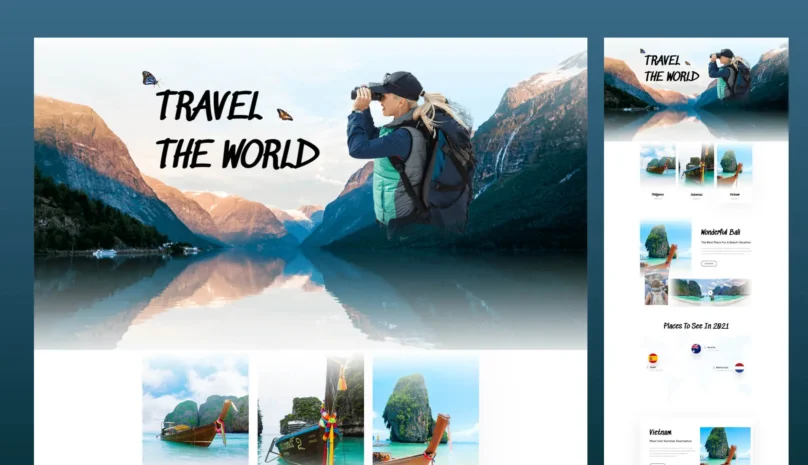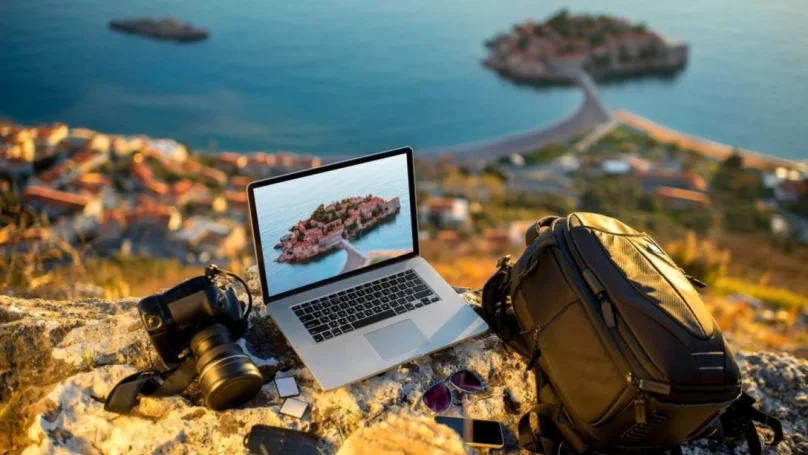
When someone searches for a travel blog, they’re often not just looking for pretty pictures and basic tips. They’re searching for real guidance, trustworthy and practical insights, and a sense that the writer knows the place ─ not just passed through on a hurry.
Today’s readers expect nuance, authenticity and real value. A blog that lacks genuine local depth will struggle to stand out and build trust. Over time, without credibility, readers won’t click, subscribe or share. That trust issue becomes the fatal weakness.
In this article, we’ll unpack why local insight matters, how it strengthens credibility, practical ways to integrate it, and pitfalls to avoid.
The Definition of ‘Local Insight’ in Travel Blogging
“Local insight” means more than knowing the tourist hotspots. It involves authentic, first-hand understanding of culture, community, history, people and nuance. A travel blogger who only recites widely available facts lacks this insight. Research in tourism shows that travellers place high value on locals as sources of authentic information.
By contrast, blogs that present surface-level content risk coming across as generic and interchangeable. A credible travel blog will reflect local customs, lesser-known spots, language quirks, or the story behind how things developed in the destination. Think of a café in the back-street that only locals know, or a festival that’s unique to one region: these are the kinds of details which help readers feel they’re getting something beyond the ordinary.
Did you know? A study from 2008 found that while blogs can approach the credibility of word-of-mouth sources, many still fall short if they don’t show authoritativeness.
That’s a timely reminder: if you want your travel blog to be trusted, you must show you’ve gone beyond surface travel-tourism tropes.
Tools like a chatgpt detector may help ensure content is authentic and human-driven, not a bland machine-generated copy.

How Local Insights Translate to Credibility
In this section we’ll look at how and why local insight builds credibility — including concrete mechanisms — and present a table summarising benefits.
Mechanisms at work
- Trust through specificity ─ When you describe a place with unique local detail (e.g., “the bakery next to the old city gate where locals buy their morning burek”), you signal you’ve spent time there, not just grabbed a checklist.
- Authority via firsthand experience ─ Readers sense when you know the area rather than repeating what others wrote. The study on source credibility found sincerity, professionalism and attractiveness matter in influencer content.
- Differentiation from generic content ─ With countless travel blogs out there, depth helps you stand apart. Local insights are your unique voice and competitive edge.
- Engagement and retention ─ A blog that feels real will keep readers longer, encourage shares, comments, or returning visits — all of which boost SEO and visibility.
Summary Table ─ Benefits of True Local Insight
|
Benefit |
What it does for your blog |
| Builds reader trust | Shows you’re “in the know” not just passing through |
| Boosts authority and credibility | Signals you’re a reliable source, not generic |
| Improves SEO | Unique content attracts links, shares and mentions |
| Enhances user engagement | Real stories invite comments, social interaction |
| Differentiates your brand | Makes your blog memorable vs. templated alternatives |
Practical Ways to Inject Local Insight into Your Posts
Here we’ll offer actionable strategies for bloggers – so you can go beyond clichés and truly embed local flavour.
Strategies you can apply
- Talk to locals. Interview residents, shop owners, guides or festival organisers. Ask them: what’s unique about this place, what visitors typically miss?
- Use context and story-telling. Rather than “this is a nice beach,” write about how local children build sand sculptures by the boardwalk at dawn, or how fishermen return there after early mornings.
- Focus on non-tourist routines. Maybe a weekly market, a local craft brewery, or a hidden walking route away from the crowds. These deepen the narrative.
- Highlight the cultural nuance. Local insight means you can explain why certain things are done a certain way — e.g., why a festival begins at midnight, or why the architecture looks the way it does.
- Document current realities. Tourist destinations change fast. Mention local economic shifts, changes post-pandemic, or new transport links — readers value up-to-date local knowledge.

Subnote
Avoid broad platitudes like “local food is good” or “friendly people”. Instead specify which food, which people, why. The difference between generic and local is in the detail.
In addition, incorporate reader-friendly elements such as mini-sidebars (“Did you know”) or bullet-lists to give structure and highlight the most compelling local insights.
Common Pitfalls and How to Avoid Them
Even dedicated travel bloggers can stumble if local insight isn’t executed properly. Let’s cover some frequent mistakes and remedies.
- Over-touristed content ─ If your blog repeats the same landmarks everyone else writes about without adding new local context, you risk appearing like a rehash. Remedy – find the angle no one else saw — maybe a local artisan, a little-known viewpoint, or the history behind the icon.
- Surface-level research ─ Focusing only on “what to see” instead of “why it matters” undermines authenticity. Remedy – add the “why” — historical roots, cultural significance, local perspectives.
- Unverified or generic sources ─ Pulling information from secondary blogs without verification reduces credibility. Remedy – when possible cite direct sources or personal visits.
- Language/cultural tone-deafness ─ If you misrepresent local norms, you betray a lack of immersion. For example, misunderstanding local etiquette or translation errors. Research shows that campaigns can fail when local sensibilities are ignored.
- Machine-generated or templated content ─ Readers can detect when writing feels robotic. Using a ChatGPT detector helps you check whether your tone still sounds human and uniquely reflective. This is why I introduced a link above. (Yes, a tiny self-check is worthwhile)
Why This Matters for SEO and Long-Term Growth
One of the major motivations behind crafting deeply local-insightful content is not just immediate engagement, but sustained SEO performance and brand growth. Search engines increasingly favour depth, originality, and user value over short superficial posts. A travel blog with real local insight attracts backlinks, longer dwell time, and repeat visitors. These all send positive signals to search algorithms.
Interesting fact
Recent travel and tourism research highlight that authenticity and credible sources drive planning behaviour more than simple inspiration.
In other words, if your blog builds actual trust, readers are more likely to act – share, subscribe, return. That’s exactly what elevates your site in the long run.
Wrapping It Up
In the crowded world of travel blogging you can’t rely on generic lists or recycled tips. What gives you credibility is true local insight – the kind of detail, perspective and authenticity only gained through immersion, listening, and meaningful engagement with a place. When you bring that into your content you build trust, authority, differentiation, engagement and SEO performance.
If you aim to create a blog that stands out, consider each post as a mini-story of local discovery – not just a guide. Interview someone, describe the local routine, tell the history behind a place, and above all, answer the question: what can only someone who spent time there tell you?
With effort and sincerity your travel blog won’t just be another site. It will become a trusted voice. That kind of credibility matters far more than fleeting clicks and in the end it’s what readers remember.
Contents
